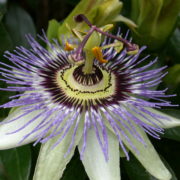Yellow Dock
(Rumex crispus)
Tastes/Energetics: bitter, sour, astringent, cool, dry
Parts Used: primarily the root, but leaves can be used externally on skin irritations
Actions: bitter tonic, alterative (blood-purifier), mild laxative
Uses: A compress soothes skin eruptions & infections. It is especially soothing to nettle stings and poison ivy rashes. A decoction can be useful for treating diarrhea. Conversely, small amounts of yellow dock infusion or tincture can relieve constipation. It is a gentle, safe laxative that strengthens the colon. Yellow Dock helps to liberate iron stored in the liver and is often used in blood-building formulas such as our blood-building syrup. As an alterative/blood-purifier, yellow dock supports the body’s detoxification processes, making it useful in cases of acne, allergies and cancer when signs of “bad blood” or toxic blood are present. It is traditionally used as a spring tonic to rid the body of the excess baggage of winter, especially if you had an extra merry holiday season!
Recipe for Iron-Rich Syrup:
- 8 Tbsp. dried yellow dock root
- 4 tbsp. dried nettle leaf
- 4 tsp. orange peel
- 4 tsp. fennel seed
- 5 cups filtered water
- Add herbs and water to pot. Mark the water level and simmer until liquid is reduced by ½.
- Strain the herb material, reserving the liquid.
- For each cup of liquid that you have remaining, add 1/4 cup honey & 1/4 cup blackstrap molasses.
- Use funnel to pour syrup into clean bottles. Label and refrigerate. Keep up to 3 months.


